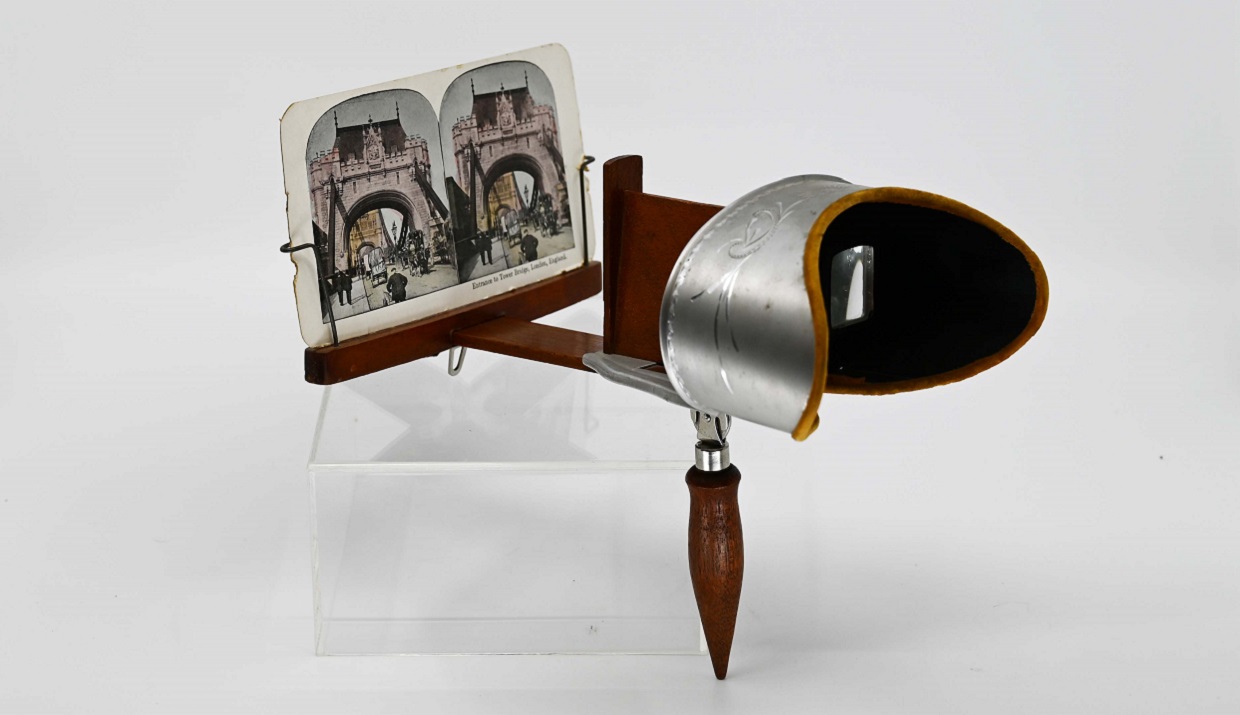
76.60.1 and 77.34.7.85
Circa 1900
Material: Wood, aluminum, cardstock
Description
Invented by Charles Wheatstone in 1838, the stereoscope was originally conceived to learn about binocular vision and how the human eyes work with each other to produce 3D imaging. By the 1850s, the stereoscope had become a popular and widespread form of Victorian parlour entertainment.
The stereographs – the cards that would fit into the stereoscope – were captured using photography. Stereographs were often purchased as tourist mementos, or to see exciting wonders of the world without having to travel too far. They remained popular into the 20th century.
Fun Fact!
The View-Master, which was released in the mid 1900s, is based upon the stereoscope’s design and incorporates the 3D viewing technology for a more modern market.

